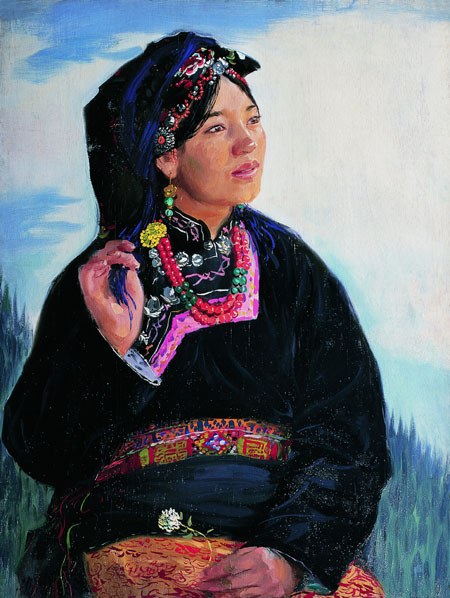Original draft of landmark Chinese painting unveiled
 0 Comment(s)
0 Comment(s) Print
Print E-mail China Daily, December 30, 2014
E-mail China Daily, December 30, 2014
 |
|
Tibetan Woman, oil on woodblock, by Dong Xiwen, 1955. [Photo provided to China Daily] |
He was born in a family that owned a large number of Chinese paintings, ceramics and works of calligraphy. Dong Xiwen's interest in art developed in his childhood, leading him to visit many top art colleges in different countries to learn from master painters.
In the 1940s, the artist and his wife went to Dunhuang in Northwest China's Gansu province, which is famous for its Buddhist grottoes. The couple lived in a house that had been a cowshed.
Despite their modest means, his passion for art remained intact, says his son Dong Shalei. While in Dunhuang, Dong Xiwen made paintings of the Buddhist murals, which helped him develop a new Chinese style on canvas.
Dong Xiwen was 38 when he was assigned to draw the most significant historical image of China's founding in 1952.
After that, he worked on many other paintings of historical events, such as the Long March of the Red Army (October 1934-October 1935), the War of Liberation (1946-49) and the Korean War (1950-53).
From 1954, he traveled a few times to the Tibet autonomous region, where he captured people's lives and the landscape in oil. In his last days, he often talked of his travels through the region, saying "the river there was so quiet that even the sound of a stone throw into it could be heard", his son says.






Go to Forum >>0 Comment(s)